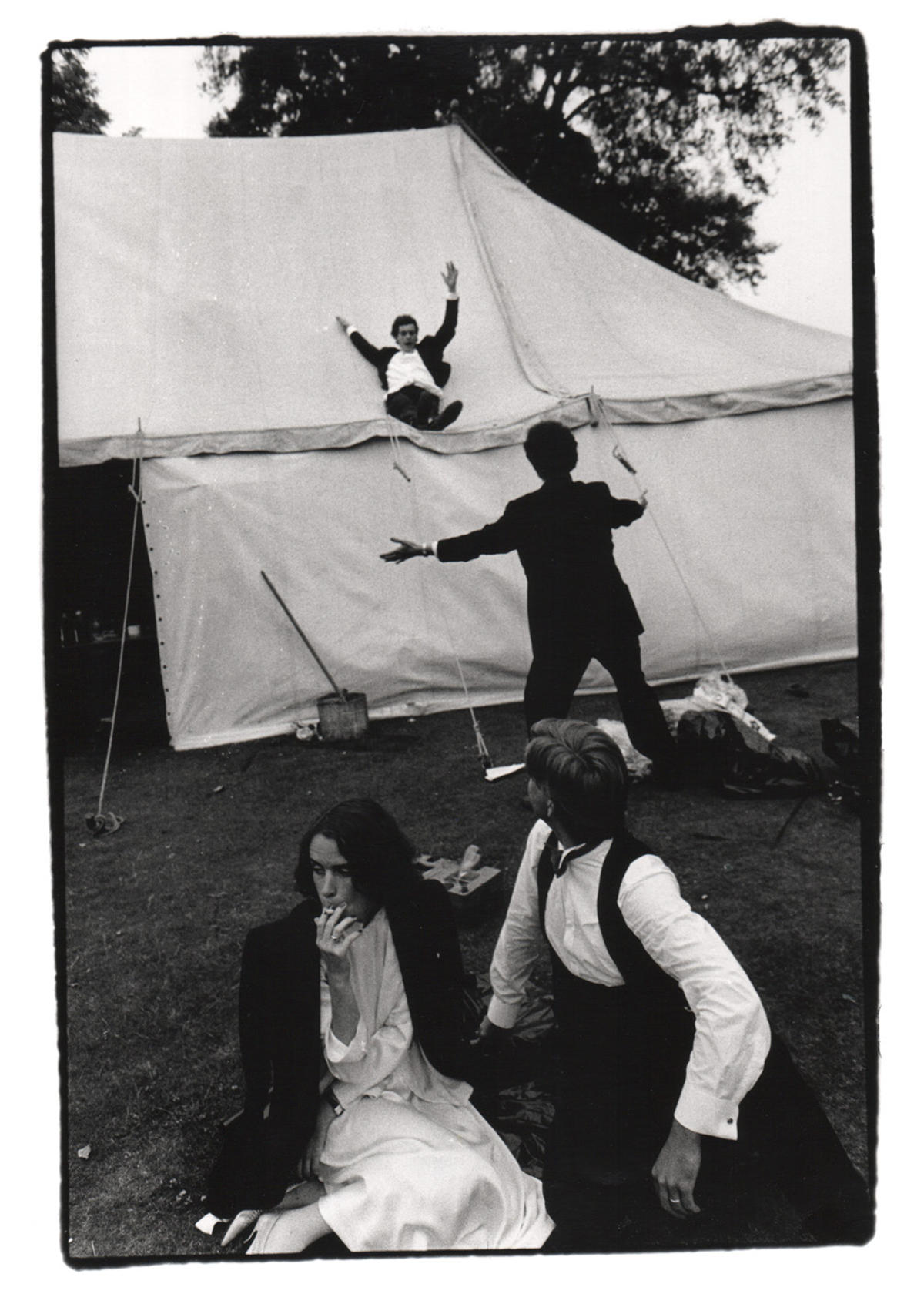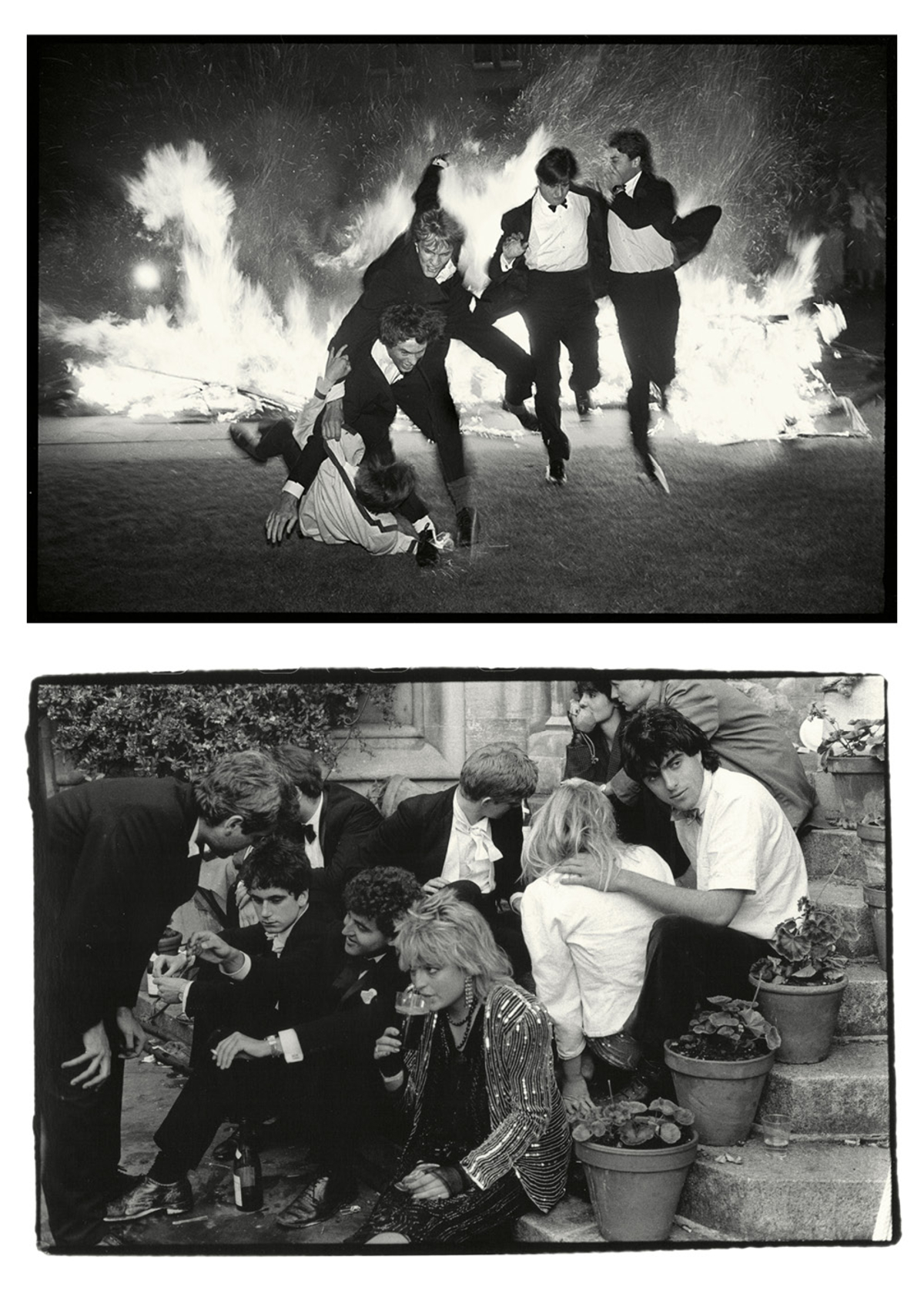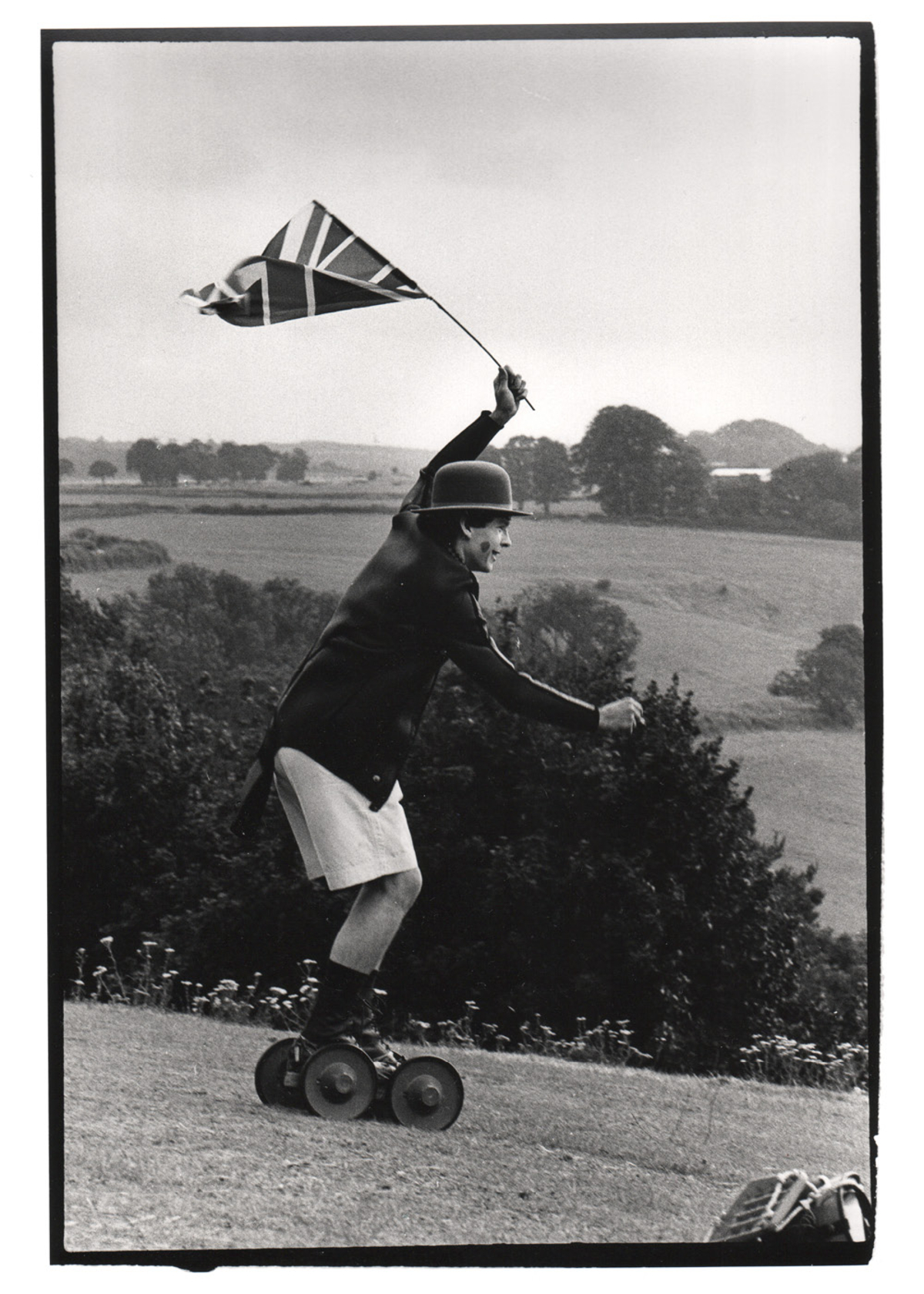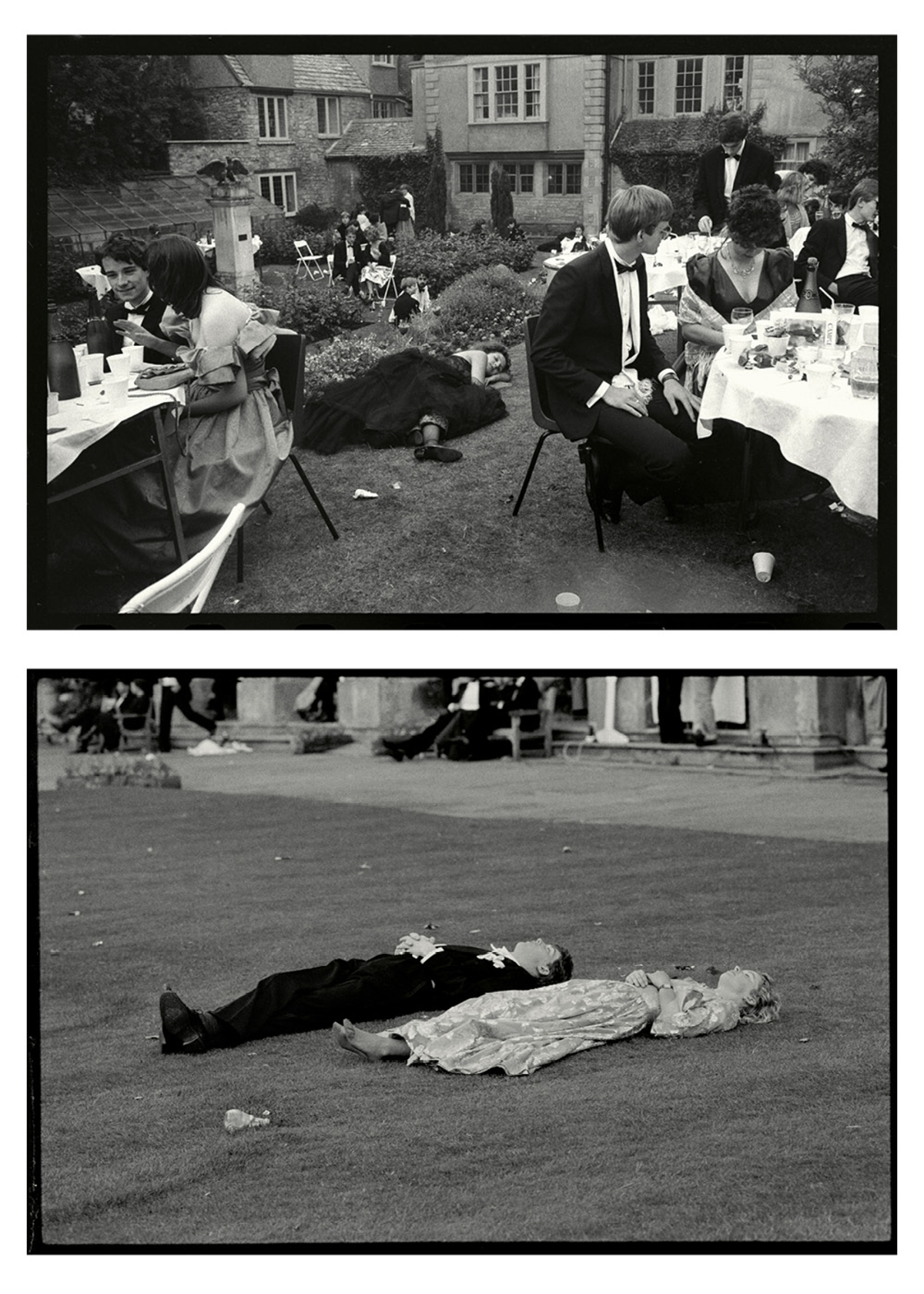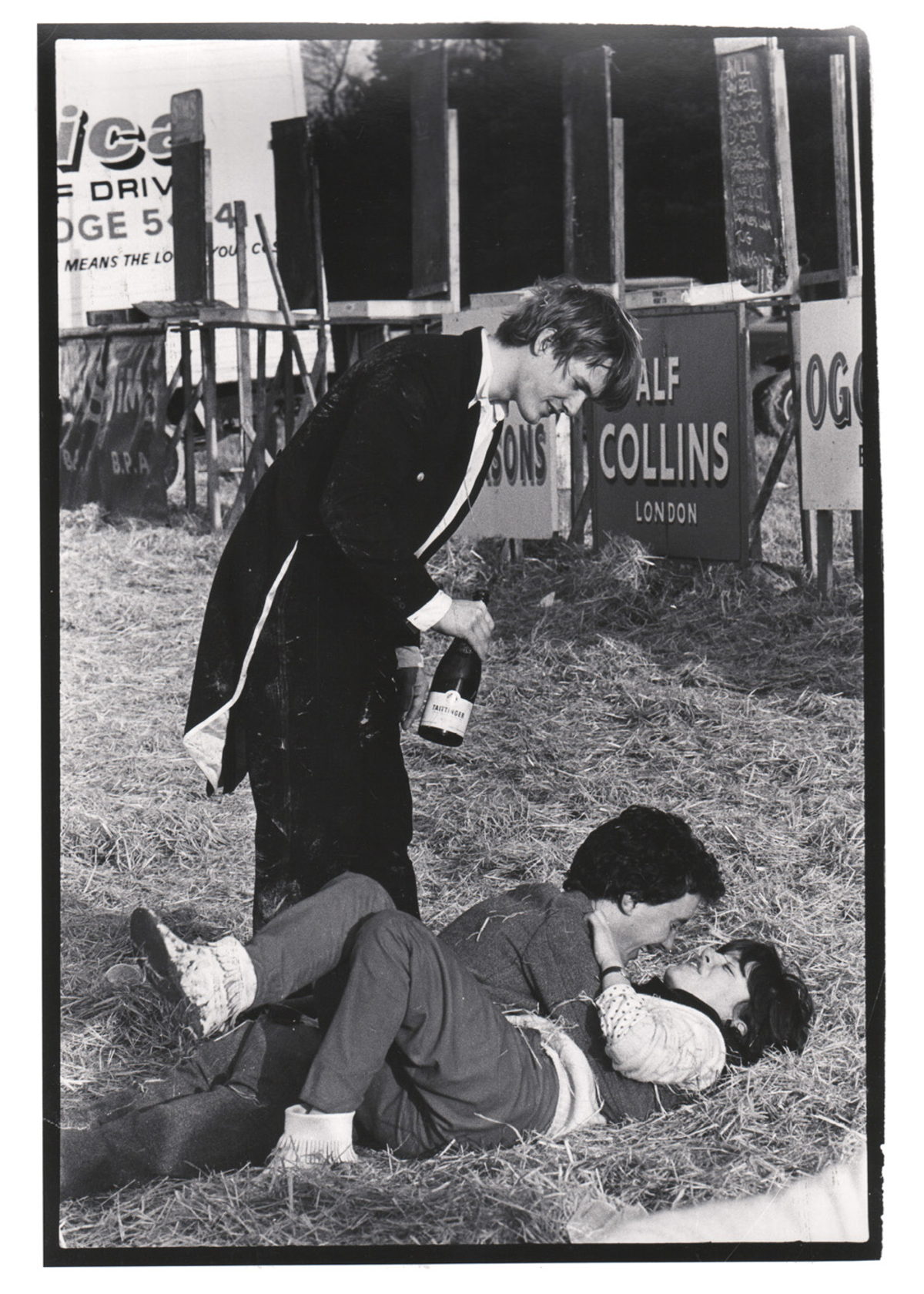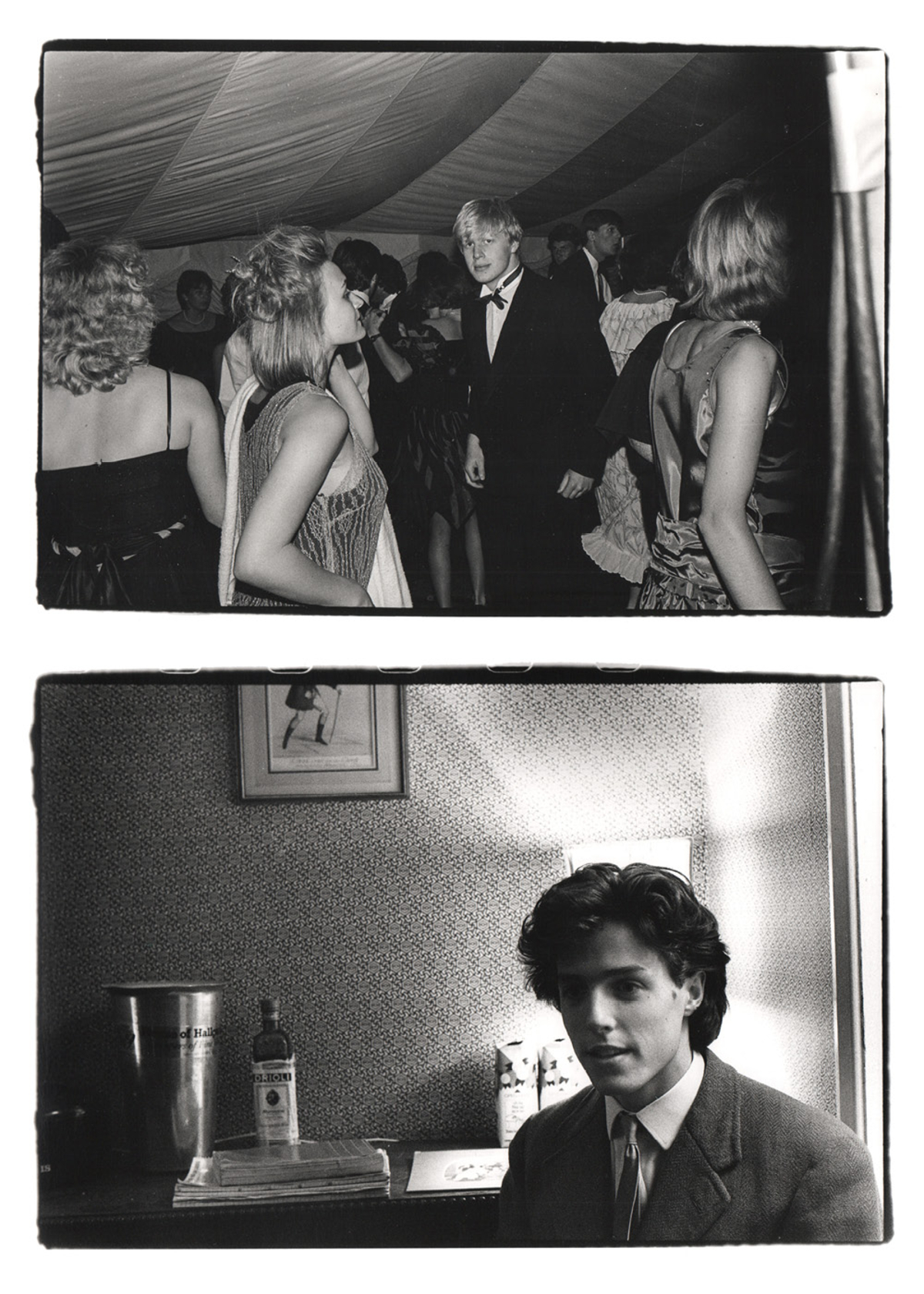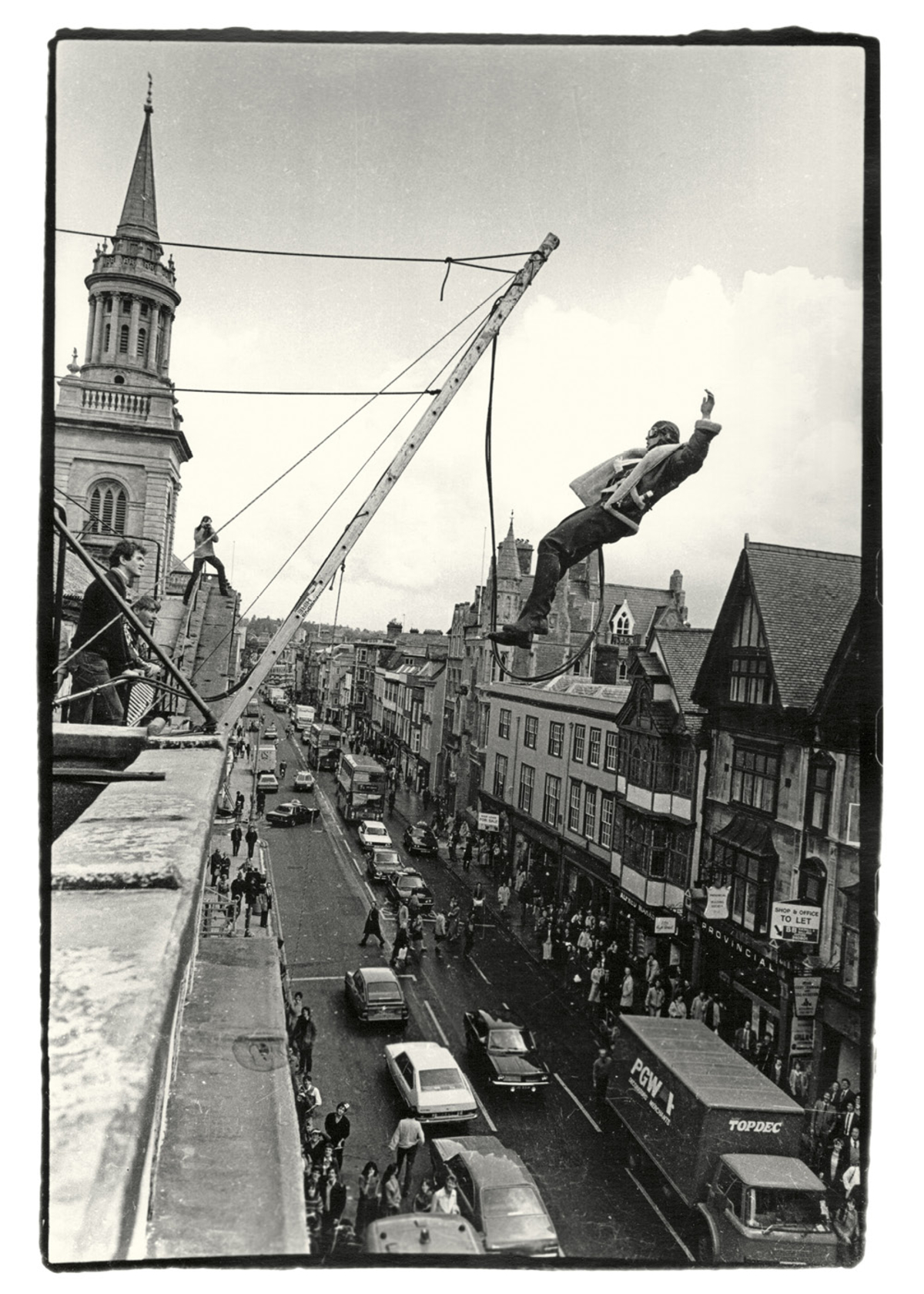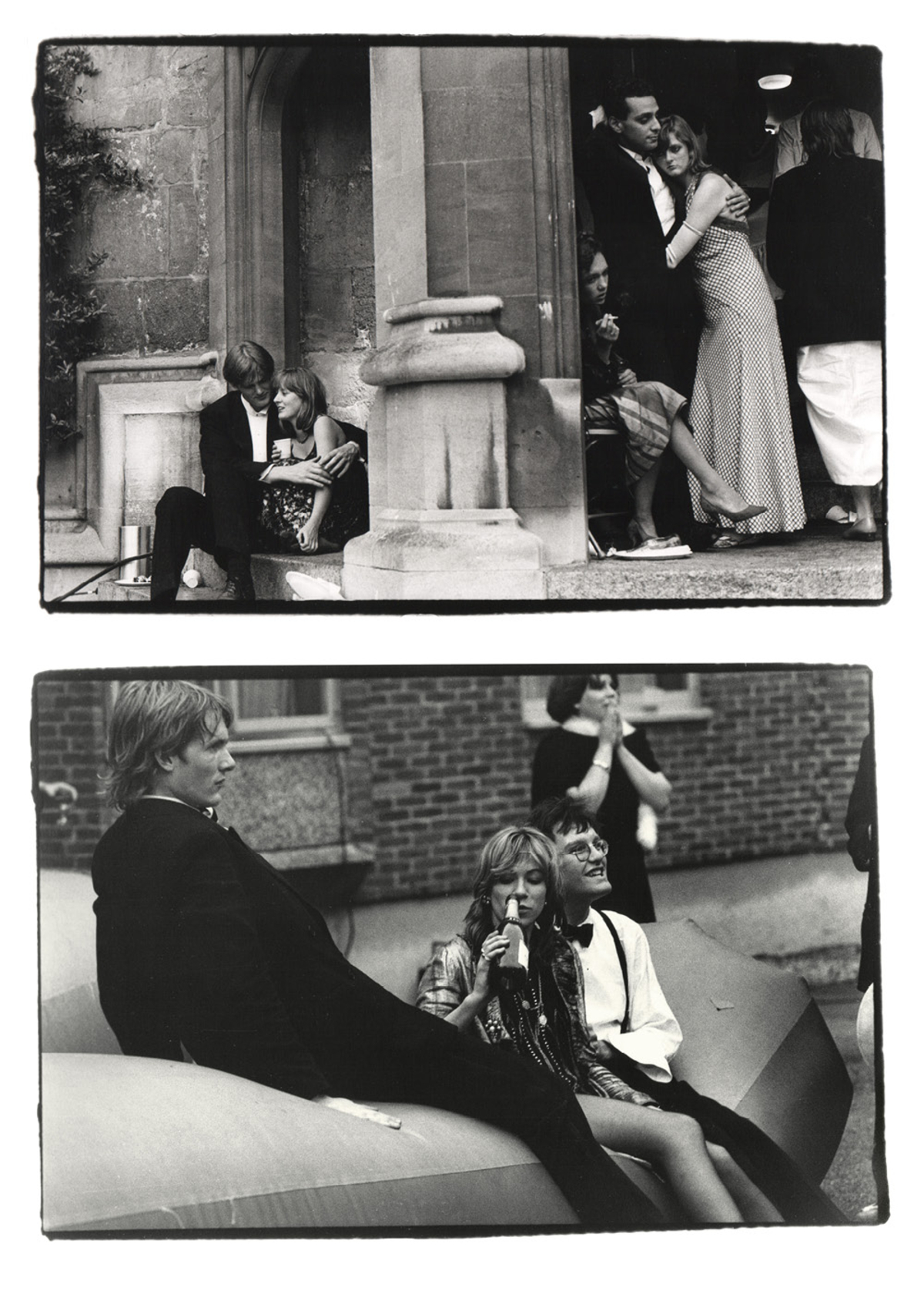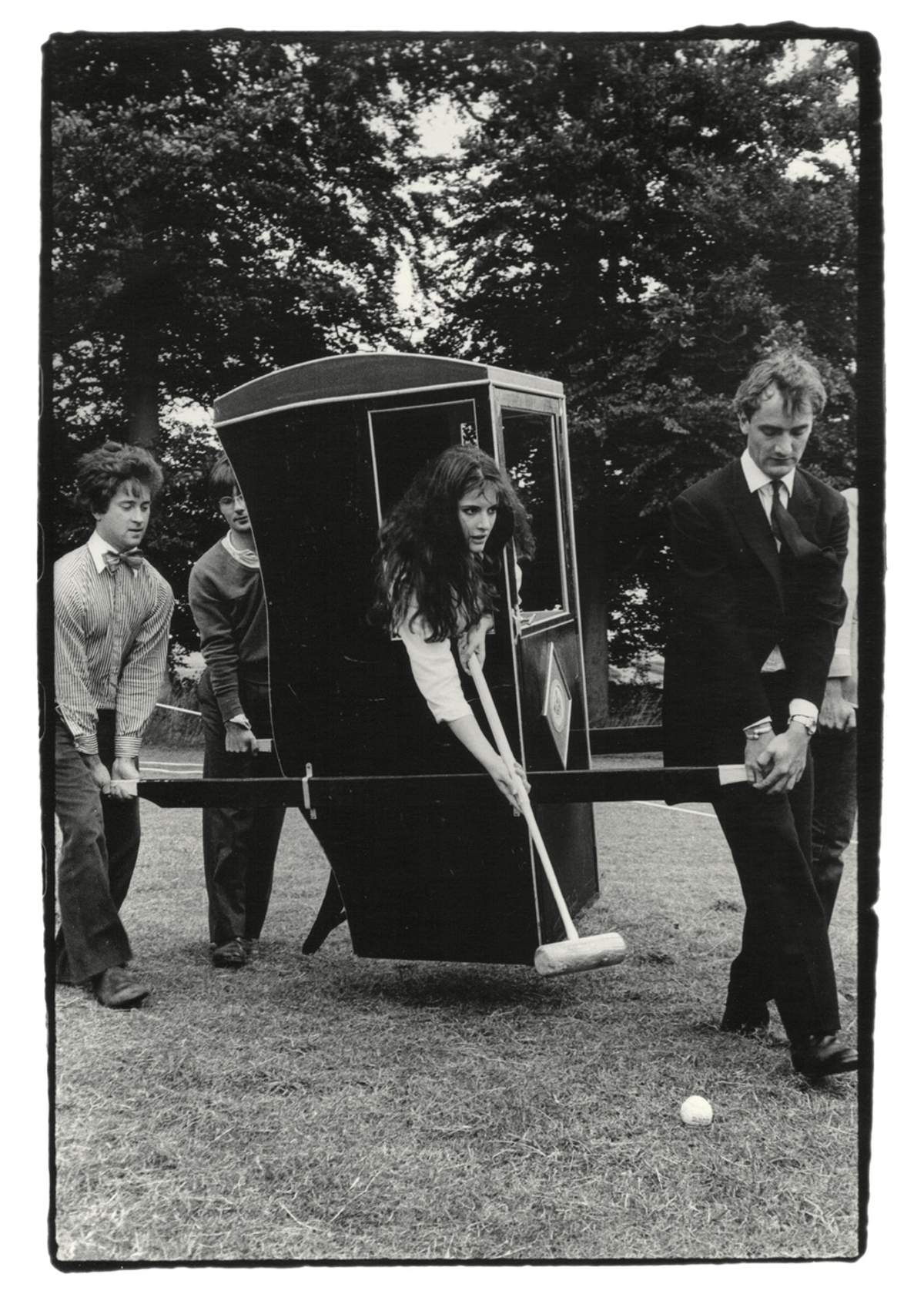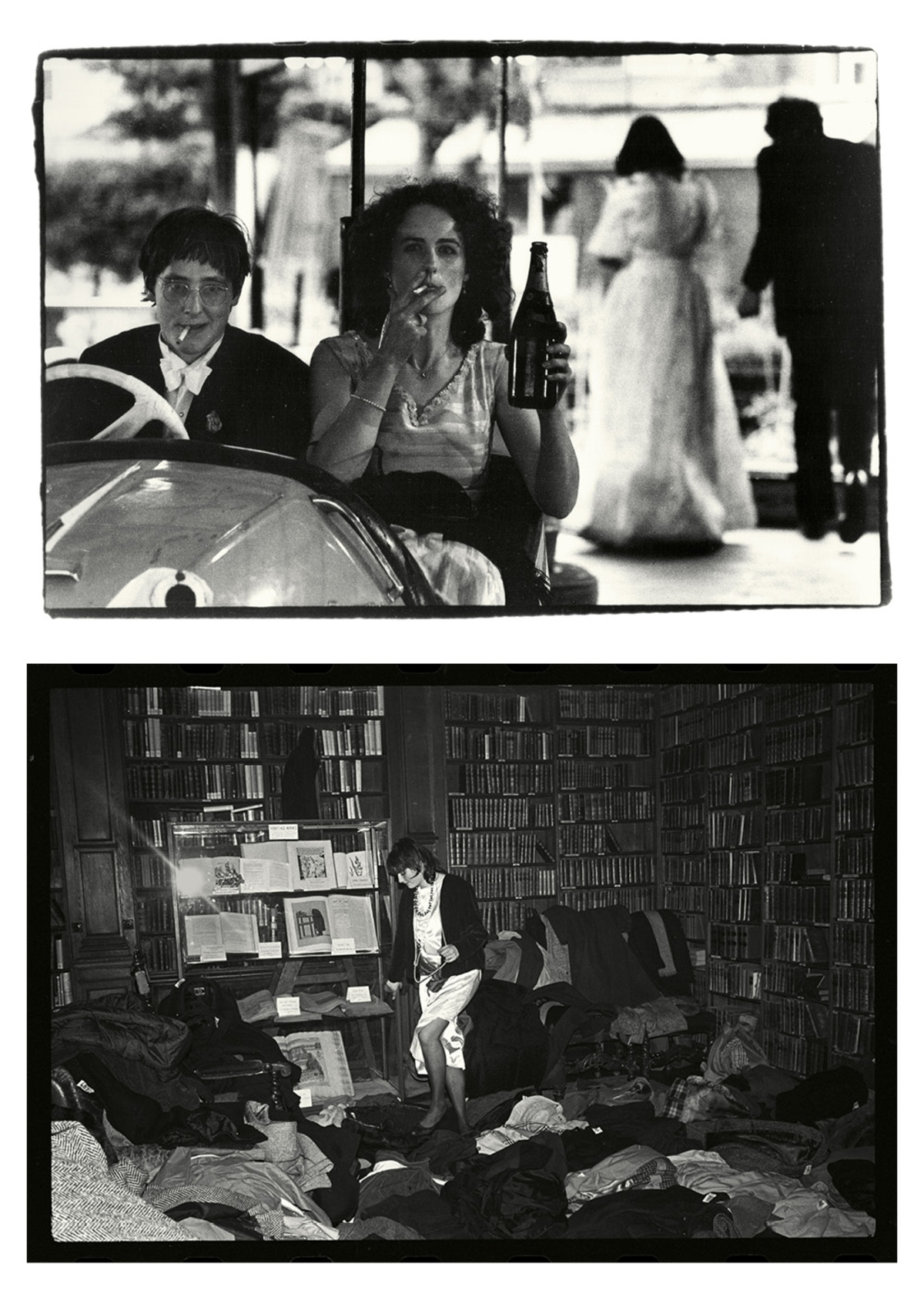I’ve spent the last few months looking through my films from Oxford, taken between 1976 and 1988, and deciding which ones to include in a new book. I had originally thought I had 25 or so decent pictures from that time; I was surprised to find quite so many.
I lived in Oxford starting from the age of 10, when my family moved there from Wales, but I was never a student at Oxford University. I was a state-school pupil at Oxford Grammar School. But it was chaos there. With hindsight, it is obvious that the headmaster, a World War II R.A.F. veteran, was suffering from wartime traumas. He would bang his head against the wall and shout about going into a “flap spin.” In any case, he saw me as a troublemaker. I left after O levels, in the early 1970s.
Notes from the Underground
At 16, I went to work at the university’s Bodleian Library, two floors underground in the dimly lit book stacks. Dark and dusty it might have been, but there was a sense of romance and excitement when you turned the lights on as you went along the corridors and the long tunnel that led between the Bodleian and the Radcliffe Camera (another Oxford building, housing the Radcliffe Science Library).
There were five of us working together underground. One was a recent graduate who didn’t speak, called Andrew, who would spend mornings doing the Times crossword puzzle. Then there was glamorous Octavia, to whom I chatted every morning for at least an hour. Jonathan and Ange, on the floor below ours, later married each other and are still together 46 years later. Ange continued to work at the Bodleian for her whole working life.
In those days, we would sit among the dusty stacks waiting to receive requests for books or documents via a pneumatic-tube system. After locating them, we would send these on a conveyor belt to the Reading Room. There were dark corners with tea chests of uncatalogued academic papers and memorabilia, along with learned papers and essays, pamphlets, stories in weekly installments, and books and periodicals from the Victorian period. I was impressed, and had plenty of time to browse and extend my education.
After about six months underground, it never occurring to me that I might request to be relocated upstairs, I left in the summer to work as a window cleaner, mainly to see daylight and to get some fresh air. I joined a local firm that cleaned some of the university’s many windows. We would start at seven A.M., when Oxford was often enveloped in an early-morning mist. Then at around eight A.M. we’d go for breakfast in the covered market.
Dark and dusty it might have been, but there was a sense of romance and excitement when you turned the lights on.
Oxford in those days had daily information sheets displaying what was happening in the university in all the bars and coffee shops. The rich variety of cultural activities put on for the students, such as rock concerts, art exhibitions, and other events, were also open to outsiders. When I discovered it was possible for anyone to go to lectures at the university, a girlfriend and I attended a whole series on English literature.
Those were the days of full grants for students and, now aged 18, I enrolled in a foundation course in art at Oxford Polytechnic under Len McComb, who taught traditional-drawing skills. A young Humphrey Ocean was a visiting tutor. I had my introduction to photography in a three-day course from Iraj Parvaneh (Yasmin Le Bon’s father).
When I was in a punt on the river one day, I witnessed what looked like a Desmond Morris–type situation—a number of men stood displaying themselves in the nude. It was, of course, Parson’s Pleasure (the university’s secluded area for male-only nude bathing), and I went back to record it with my Russian 35-mm. camera. It was one of my first attempts at photographing university life. I meant to use the photographs as source material for a painting, but decided they stood on their own and used them in a collage instead.

When I returned to Oxford after three years studying at the Winchester School of Art, I wanted to do photography but couldn’t find a job. I began going to editorial meetings for the student magazines—also advertised on the daily information sheets around town—and taking photographs for Isis magazine and Cherwell. They had a shortage of photographers, and no one seemed to care much that I wasn’t actually enrolled at the university. It was unpaid but valuable experience. Simon Esterson was the student designer of Isis; he would go on to design the Express magazine and The Oldie, among others.
I set up a photographic studio with art-school friends next to Worcester College, in Jericho, close to the center of Oxford. My plan was to do black-and-white, Hollywood-style portraits. Then Oxford University Press started using me to take photos for English-language teaching books. Meanwhile, I was supporting myself with part-time cleaning—I cleaned kitchens in student houses and a publisher’s offices to supplant my meager income from photography.
Photo Op
Around the same time, in 1980, I was short-listed for a photography competition that The Sunday Times was running. A thousand or so had entered and 25 of us had been short-listed and given subjects to photograph. (They gave us subjects that the paper was interested in covering, in any case.) I chose the return of the Bright Young Things.
I’d already noticed that students were no longer dressing like long-haired tramps. Suddenly formal dress and black-tie were becoming de rigueur. I saw this partly as a fashion reaction to the dressing-down style of the 60s and 70s. After the election of Margaret Thatcher, the rich were already benefiting from generous tax cuts and had started to feel confident again.
But where were the Bright Young Things? I asked questions and badgered everyone I could think of. Those were the days before mobile phones and e-mail. I didn’t even have a landline—I would use the telephone at one of my cleaning jobs to make calls. I visited students in their rooms and clubs in my search, and while I wasn’t convinced that the Bright Young Things as exemplified in Evelyn Waugh’s Vile Bodies were making a comeback at Oxford, I discovered there was a resurgence of student dining clubs and dressing up for parties. Some clubs, like the Gridiron and Bullingdon, turned down my requests to photograph in them. But others said yes. It was the first time I had photographed parties.
Then I discovered a problem: parties are actually very difficult to photograph. Pointing a camera at someone in a crowded party and getting something worthwhile is difficult. I wanted to take photographs that recorded those ephemeral moments, ones that caught the essence of the occasion and its mood and which would be memorable. The light was usually bad, so I used a flash, but this in turn flattened the pictures. The photos worked only if something really interesting was going on in them. I learned as I worked.
Suddenly formal dress and black-tie were becoming de rigueur.
At the time, I lived literally round the corner from Norreys Avenue, where some of my first pictures at the Piers Gaveston dining club were taken. I would pop in for a very short while and be as unobtrusive as possible. I was doing reportage pictures, but because of the drinking and behavior the results often had a paparazzi edge. When I developed the first films and saw the pictures, I was worried about them. Had I gone too far? I showed them to an editor friend, Sally Foord-Kelcey, at Oxford University Press. She was encouraging. It helped that I was working with black-and-white film, which in those days was very cheap to buy in bulk and allowed me to do my own developing.
I sent my pictures in to The Sunday Times. I didn’t win, but my images gained a lot of attention, in particular from Tina Brown, who began using me at Tatler magazine to photograph more Oxford parties; eventually she offered me a job in London. And despite my first pictures not being particularly flattering to their subjects, invitations to photograph other aspects of Oxford continued. Fortunately, many of the subjects felt they were in on the joke, and appreciated the pictures. I was invited to the Dangerous Sports Club tea party, and went on to photograph events such as the Bullingdon point-to-point, May Morning, the Burning Boats, and the end-of-year balls.
The students I met at Oxford were very different from my art-school friends. At art school, anyone middle-class pretended they were not. They had to at the Winchester School of Art, then ruled by a Glaswegian cabal who despised the middle classes. In fact, the loudest boy there, who spoke with a Cockney accent, was in reality the most middle-class. (He now works for The Telegraph.) The mood at art college was nihilistic.
The difference with Oxford was the enthusiasm and chatter. Many were excited to be there and enjoyed talking. I learned that there was only superficial interaction between the different social groups at the school. At 1980s Oxford, the majority of incoming students had been privately educated. The intake was much less diverse than it is today.
I discovered a personal preference for those educated at London day schools. They were clever but somehow not as snobbish as the boarding-school kids. There was a privileged group who were entirely privately educated. But, also, the top public schoolboys looked down on the lesser public schoolboys. They formed their own societies and clubs. They were often from famous aristocratic families—they had cars and trust funds—and kept themselves apart from their usually more ambitious and hardworking but less well-off contemporaries.
Many were experimenting with hard drugs. Three of the young people I photographed died tragically. When I heard about the death of one, he was described as having an amazing brain. I realized I’d seen no sign of this as I’d only ever seen him intoxicated. There were a few who seemed to just move from Eton and Oxford and have successful careers in the Establishment. But there were also many others who had just as difficult a time as everyone else. Not everybody was having a good time at Oxford. This is apparent in some of the pictures.
Looking at them now they seem more romantic than I expected. They have been described as celebratory and affectionate in their way, which is something I would agree with.

